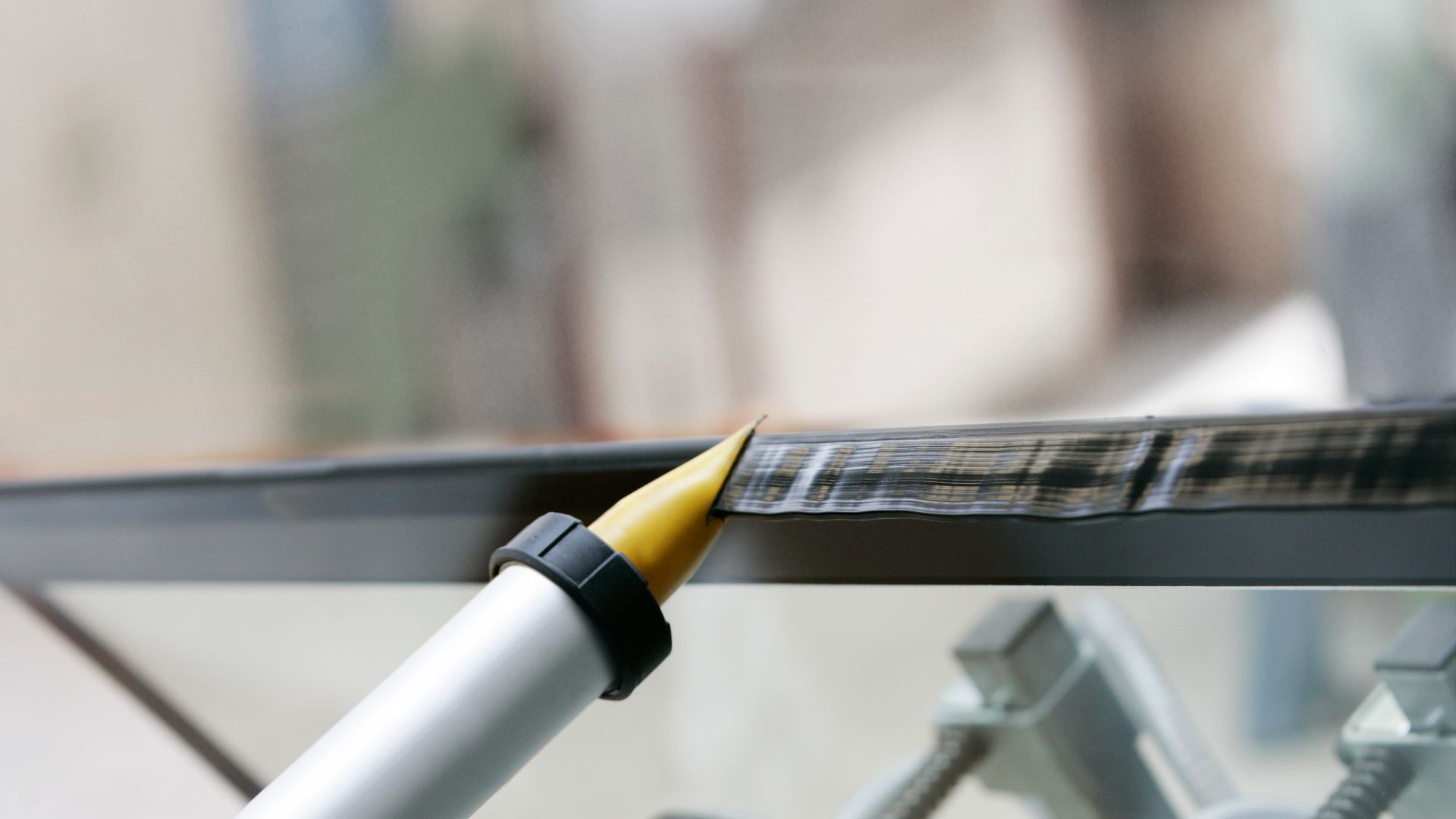Today and in the Future, Windshields will be Bonded with Polyurethane Adhesives
Polyurethane adhesives are the undisputable standard for vehicle glass bonding. There are good reasons why vehicle producers rely on the unique performance of Sikaflex® polyurethane adhesives. Since the windshield fulfills more functions than just keeping the rain out, specifications from car producers are best met by polyurethanes.
Strength
Polyurethanes meet the high strength requirements defined by vehicle producers to ensure the glass can fulfill all its safety functions
Stiffness
Polyurethanes structurally integrate into the windshield to a stiffness level that allows car producers to economise on weight by reducing the sheet metal thickness
Durability
Polyurethanes withstand harsh conditions such as desert and tropical climates, salt from sea water or winter conditions
Processing
Polyurethanes come with ultimate grab allowing fully automated factory installation of windshields
Sika has always been at the forefront of innovation in vehicle glass bonding applications by introducing the first black-primerless adhesive solutions or Sikaflex® Booster solutions for accelerated curing adhesives and increased productivity.
Sikaflex® Purform® windshield adhesives meet all relevant performance requirements whilst eliminating the need for specific REACH health and safety training. User exposure to chemicals is therefore reduced and limited to an absolute minimum.
Adhesive Performance Relevant for Passenger Safety
The windshield in front of you is not just there to protect you from the wind and rain, it has additional functionality for your car’s passive safety system. The performance of the windshield adhesive plays a crucial role in protecting passengers.
Prevents Passenger Ejection
The windshield and the bonding are designed to prevent passengers from being ejected during a car crash. This aspect is part of crash tests that car manufacturers are obliged to carry out before launching a vehicle.
Serves as a Airbag Backboard
In many cars the windshield is exposed to the force of the inflating airbag and occupants’ bodies. It needs to stay in place and keep the passengers inside the vehicle.
Prevents Roof Crush
Since the windshield is a structural part of the car body, it must prevent roof crush from occurring in a roll-over accident.
The Origin of Bonded Vehicle Glass
Increased safety requirements for passenger cars were the main driver for the introduction of adhesive bonded windshields in the 1960s. Requirements to install vehicle windshields which would stay attached to the bodywork in the event of a crash were defined in US FMVSS Standard 212.
The technology used up to this point was inadequate, and was replaced by the adhesive bonded screen. Between 1963 and 1976, European vehicle manufacturers began to use this technology for vehicles intended for export to the USA. The first large-scale use of this technology for the European market occurred in 1976, with the Audi 100. Polyurethane windshield adhesives then became established as the worldwide norm in car construction. BMW was the first car manufacturer to use Sika adhesives, and therefore bond without black primer.
In today’s cars, vehicle glazing is an integral part of vehicle construction, design and safety. This places high demands on the windshield adhesive, such as increasing the modulus of rigidity, providing conductive properties to allow for the operation of the aerial, and aiding with protecting the bodywork from corrosion. Today, the airbag system is an essential part of the passive safety system and is only made possible by the strength of the windshield bond.
Automotive Adhesive Requirements
The safety aspects of bonded car windshields have led to stringent requirements regarding the adhesive strength and durability of the bonding. Cars are exposed to seawater, sunshine, salt spray in winter and many other factors which the adhesive must be able to cope with.
In addition, car manufacturers have used the stiffening effect of the glass to increase overall vehicle stiffness, which enhances safety but also reduces steel thickness and vehicle weight
In relation to processing, advances such as black-primerless bonding of glass or long open time primers which are applied at the sub-supplier have significantly reduced the complexity of bonding. Warm-applied adhesives which instantly hold the windshield in place have allowed the factory installation to be automated.
These unique properties combined with the best cost-performance ratio mean that all car manufacturers rely on polyurethane adhesives for windshield bonding.
Sikaflex® Purform® windshield adhesives meet all automotive performance requirements whilst eliminating the need for specific REACH health and safety training. User exposure to chemicals is therefore reduced and limited to an absolute minimum.
Railway Adhesive Requirements
The requirements for adhesives used in the assembly of glass and railway components differ significantly from what is needed on passenger cars. Again, polyurethanes are the dominating technology and for many good reasons:
Strength
The loads found in rail car design are significantly greater than in passenger cars. Only polyurethanes allow these forces to be managed while keeping the adhesive joints small (design aspect).
Durability
Rail cars are made to last for 30+ years. Polyurethanes can best withstand harsh conditions such as desert and tropical climates, or salt from sea water.
Resistance
Rail operators use aggressive cleaners to remove dirt such as brake dust, wear out of the contact wire and graffiti.
Processing
Polyurethanes also cure in large joints, which are common in the railway industries. If combined with Sikaflex® Booster technology, through curing can be ensured regardless of climate or joint deptht.
Sikaflex® Purform® adhesives meet all performance requirements of the railway industry whilst eliminating critical components such as diisocyanates and phthalates from the product composition.

